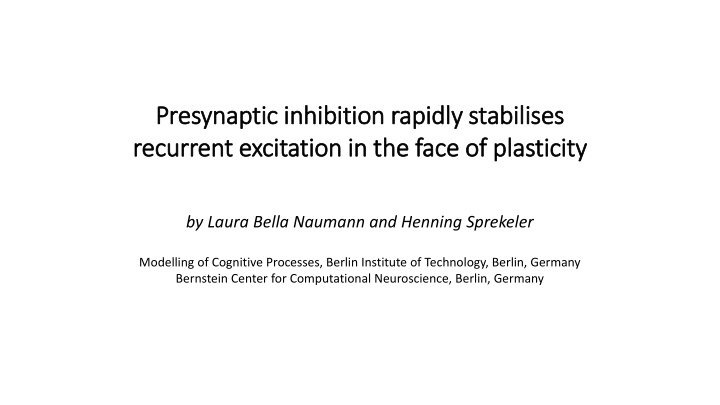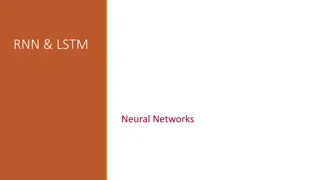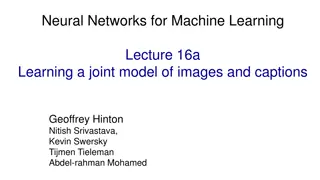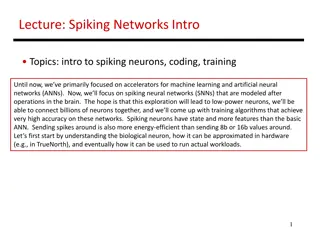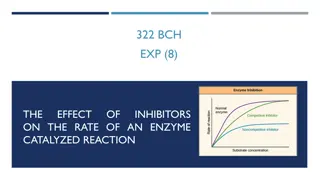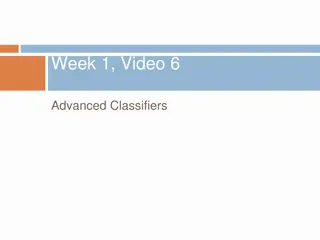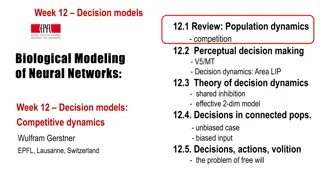Role of Presynaptic Inhibition in Stabilizing Neural Networks
Presynaptic inhibition plays a crucial role in stabilizing neural networks by rapidly counteracting recurrent excitation in the face of plasticity. This mechanism prevents runaway excitation and maintains network stability, as demonstrated in computational models by Laura Bella Naumann and Henning Sprekeler. Through modulation of neurotransmitter release and GABA spillover, presynaptic inhibition suppresses synaptic transmission and compensates for changes in excitatory weights. The interplay between presynaptic inhibition and Hebbian plasticity highlights the importance of homeostatic mechanisms in regulating neural activity.
Download Presentation

Please find below an Image/Link to download the presentation.
The content on the website is provided AS IS for your information and personal use only. It may not be sold, licensed, or shared on other websites without obtaining consent from the author.If you encounter any issues during the download, it is possible that the publisher has removed the file from their server.
You are allowed to download the files provided on this website for personal or commercial use, subject to the condition that they are used lawfully. All files are the property of their respective owners.
The content on the website is provided AS IS for your information and personal use only. It may not be sold, licensed, or shared on other websites without obtaining consent from the author.
E N D
Presentation Transcript
Presynaptic inhibition rapidly stabilises Presynaptic inhibition rapidly stabilises recurrent excitation in the face of plasticity recurrent excitation in the face of plasticity by Laura Bella Naumann and Henning Sprekeler Modelling of Cognitive Processes, Berlin Institute of Technology, Berlin, Germany Bernstein Center for Computational Neuroscience, Berlin, Germany
Hebbian Plasticity When an axon of cell A is near enough to excite a cell B and repeatedly or persistently takes part in firing it, some growth process or metabolic change takes place in one or both cells such that A s efficiency, as one of the cells firing B is increased Hebb, 1949 BUT - positive feedback loop! Inh Solution presynaptic inhibition?
Presynaptic inhibition suppresses synaptic transmission Mechanism: 1. Network activity drives inhibitory interneurons 2. GABA spillover from inhibitory synapses Activates presynaptic GABAB receptors at excitatory synapses 3. Suppresses Ca2+ channels 4. Inhibits neurotransmitter release 5. Decreases amplitude of EPSP
Presynaptic inhibition in a recurrent network model Rate network GABA spillover = inhibitory activity Presynaptic modulation = multiplicative release factor Scales excitatory weights Decreases linearly with increased inhibitory activity. Darker green = increased
Presynaptic inhibition compensates for recurrent excitation Stability in network = how the overall firing rate increases with changes in recurrent excitatory weights Network with no presynaptic inhibition: Network with presynaptic inhibition:
Presynaptic inhibition prevents runaway excitation in the face of Hebbian plasticity Zenke et al. - SNN with Hebbian plasticity stability requires timescale of homeostasis < plasticity Networks: Excitatory recurrent synapses plastic subjected to BCM rule Homeostasis implemented with sliding threshold Aim = keep running average of single neuron firing rates at given rate Time constant = timescale of homeostasis = homeostatic time constant Presynaptic inhibition
Presynaptic inhibition prevents runaway excitation in the face of Hebbian plasticity Without presynaptic inhibition: If homeostasis is fast enough, target rate is achieved Above critical time constant, sliding threshold not able to control +ve feedback loop With presynaptic inhibition: Critical time constant increased more than 10 fold Beyond critical time constant, pathological runaway of activity is prevented.
Presynaptic inhibition prevents runaway excitation in the face of Hebbian plasticity Low mean firing rate with presynaptic inhibition limits population rate by suppressing recurrent interactions
Presynaptic inhibition prevents runaway excitation in the face of Hebbian plasticity Derivation of critical time constant demonstrated range of stability increases with: Lower release factor at target rate Stronger excitatory recurrence Steeper decrease in release factor in response to overall GABA spillover A stronger dependence of GABA spillover on excitatory firing rate Amount of noise in network in relation to target weight Accurate prediction of critical homeostatic timescale if presynaptic inhibition is not too strong If we remove noise on initial excitatory weights (source of heterogeneity) simulations match theory regardless of presynaptic inhibition strength.
Presynaptic inhibition in spiking network confirms results LIF neurons, current-based synapses GABA spillover = spikes from inhibitory neuron Accumulated GABA inhibits excitatory transmission Higher GABA decreases amplitude of EPSPs
Conclusions Present role of presynaptic inhibition to stabilise recurrent excitation in the presence of plasticity Presynaptic inhibition can alleviate destabilisation of network activity caused by changes in recurrent excitation Negative feedback loop serves as a rapid compensatory process that attenuates synaptic transmission if network activity is too high Prevents runaway excitation arising from Hebbian plasticity when homeostatic control mechanisms alone are not fast enough Allows for homeostasis on biologically realistic timescales without compromising network stability
References 1. Naumann LB, Sprekeler H (2020) Presynaptic inhibition rapidly stabilises recurrent excitation in the face of plasticity. PLOS Computational Biology 16(8): e1008118. https://doi.org/10.1371/journal.pcbi.1008118 2. Zenke F, Gerstner W. Hebbian plasticity requires compensatory processes on multiple timescales. Philosophical Transactions of the Royal Society B: Biological Sciences. 2017; 372(1715):20160259. https:// doi.org/10.1098/rstb.2016.0259
